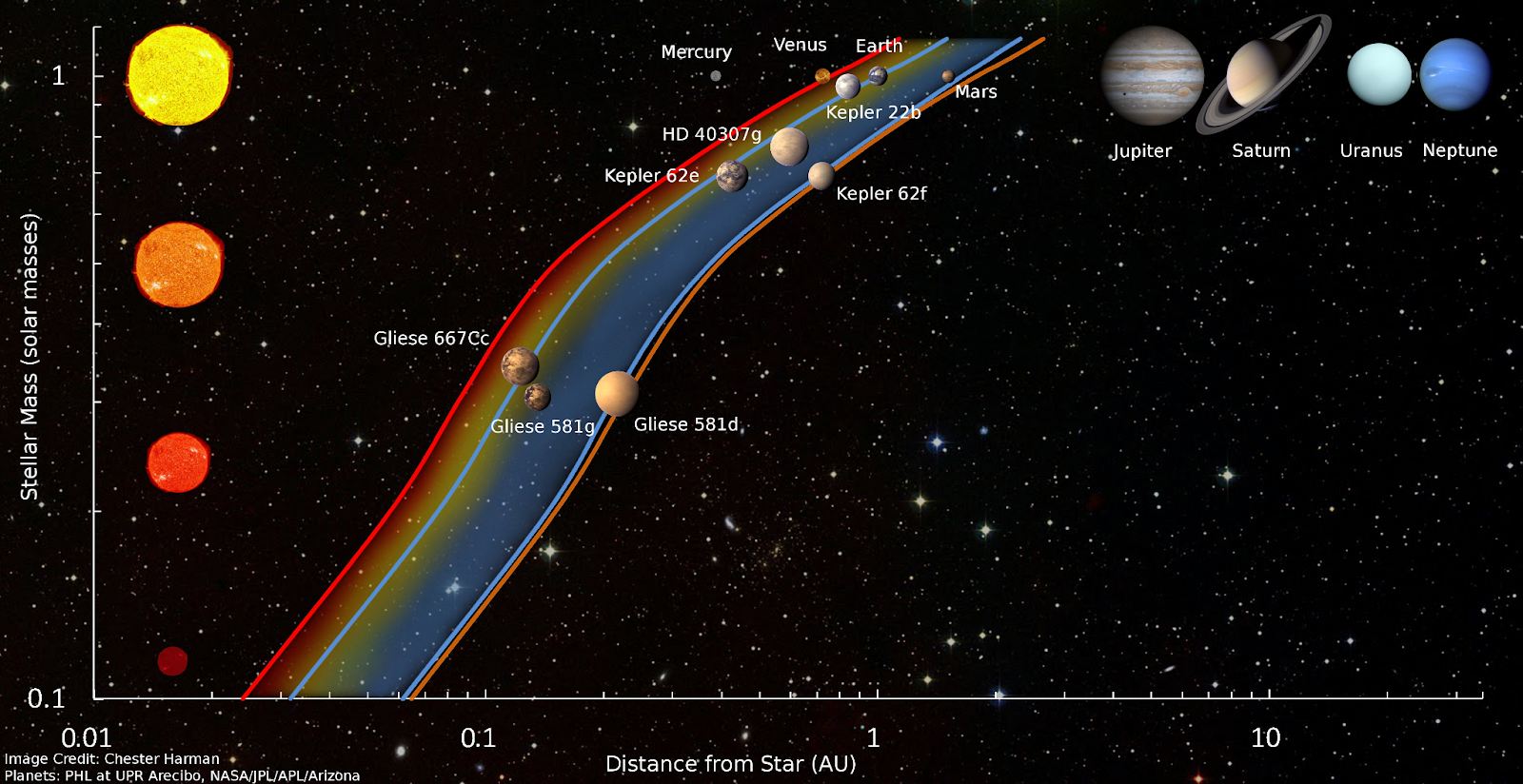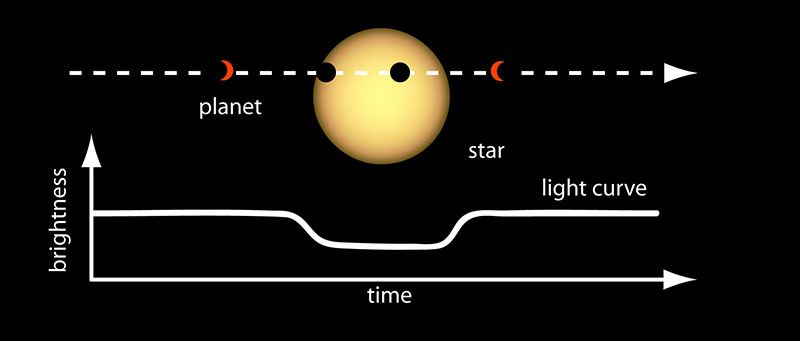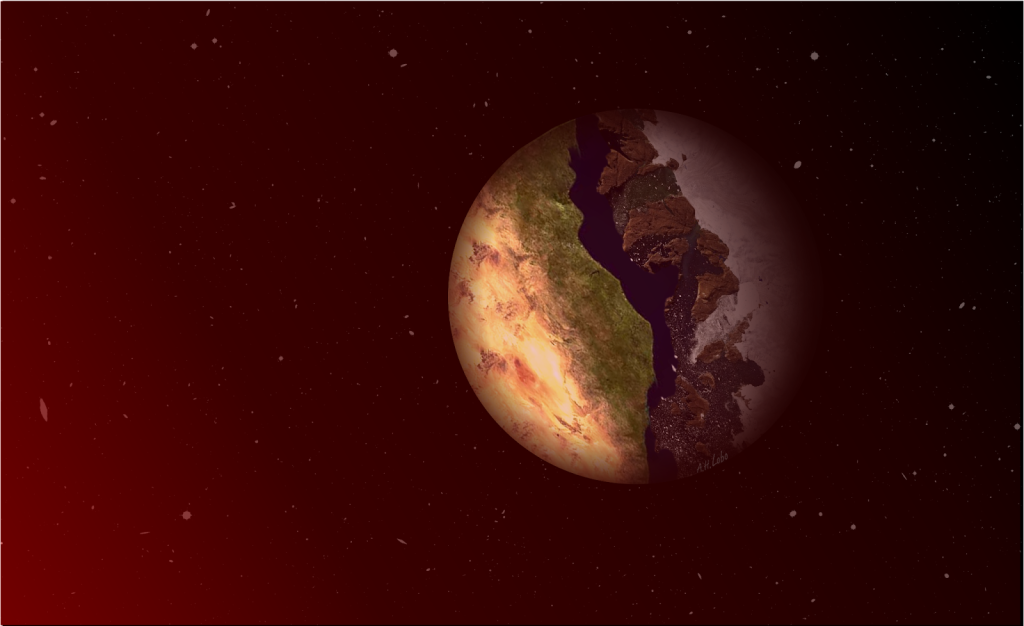Over 6000 exoplanets, planets orbiting stars other than our Sun, have been discovered, offering a glimpse into the vast diversity of planetary systems beyond our own. As our technological capabilities continue to advance, this number is expected to rise, and many exoplanets will be unveiled. Amidst this cosmic diversity, one question prevails: how do we identify a truly habitable planet—one that can support surface liquid water?
One promising avenue is focusing on planets orbiting M-dwarf stars- smaller and cooler stars than our Sun. These stars constitute 70% of the total population within our solar neighborhood, making them statistically significant targets for exoplanet research. Secondly, the habitable zone- the range of distances where temperatures are amenable to surface liquid water, is closer to an M-dwarf planet than a Sun-like star, as illustrated in Figure 1. This makes them excellent targets for observations. The transit technique detects dips in star brightness when a planet passes in front of its host star. It is particularly effective for detecting planets orbiting M-dwarfs, as shown in Figure 2. The dip in the light curve is then used to measure the planet’s radius.

Figure 1: The Habitable zone of M-dwarf stars is closer than that of a Sun-like star

Figure 2: This figure represents the transit method. As the planet passes in front of its host star, its brightness decreases, which can be used to measure the planet’s radius.
However, planets orbiting M-dwarf stars face a unique challenge: synchronous rotation. Similar to how the moon is in synchronous rotation with the Earth, so the same side of the moon always faces us, these planets have one side permanently facing the star (the dayside). In contrast, the other side remains in perpetual darkness (the nightside). The boundary between these two extremes, known as the terminator zone, presents a fascinating area for exploration. This zone is illustrated in Figure 3.

Figure 3: The terminator zone is shown for an exoplanet. While the side facing the star is in perpetual daylight, the other side is in perpetual nightside.
(credit: Ana Lobo)
In their groundbreaking study, Lobo et al. (2023) delve into the terminator zone of M-dwarf planets to investigate its potential habitability. They categorize their study into two main scenarios: water worlds and water-limited or land planets akin to planet Arakis in Dune. The study focuses on the planets that lie on the inner edge of the Habitable Zone (HZ) and employs a 3D Global Climate Model (GCM) called ExoCAM to run simulations.
The findings reveal intriguing insights. On water worlds, temperatures tend to soar to levels that cause water to escape the planet’s atmosphere. Furthermore, the strong heat transport in the atmosphere leads to uniform temperatures across the planet, exacerbating water loss. In contrast, land planets maintain clement conditions at the terminator zone due to weaker heat transport and significant temperature differences between the day and night. Interestingly, the study also found that the water worlds may eventually transition to a water-limited state after losing water, potentially creating a terminator zone conducive to supporting life.
This study enriches our understanding of the diverse climate configurations that may exist on rocky exoplanets orbiting M-dwarf stars. These findings have implications for future missions, such as the James Webb Telescope and the upcoming Habitable Worlds Observatory, which may uncover additional clues about the habitability of exoplanets. This study confirms that the twilight zone on extrasolar planets may be a promising and exciting frontier for exploring habitability.
Written by Vidya Venkatesan
Edited by Claire Rogers
